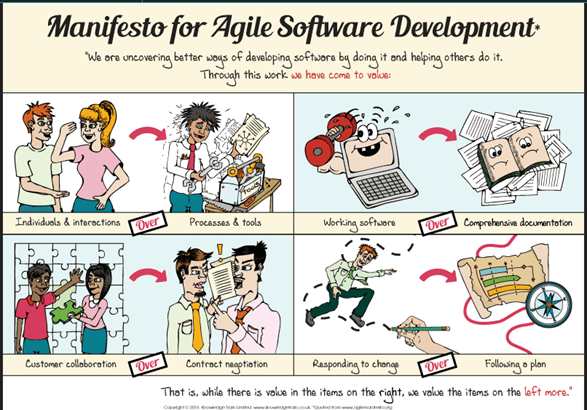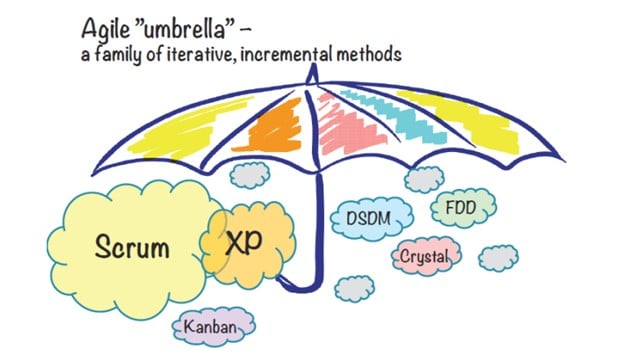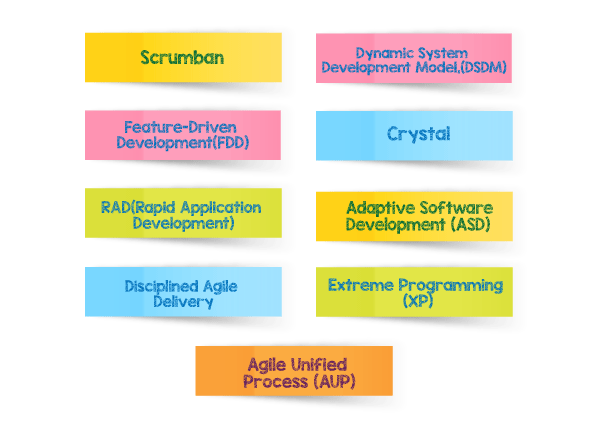Agile’s HOT - Here are 6 reasons why
A few days back, in one of our client meetings, the question ‘why is Agile so popular?’ popped up. Since Agile and its underlying frameworks have been in existence for quite a while, it was simple. Albeit, the thought was whether it was favorable.
Agile is not popular in the IT industry alone, but also manufacturing, food and beverage, and automobile industries. So it’s not uncommon to hear project managers brag about having Agile teams working on the backlog.
Moreover, Agile has completely redefined the way the software industry works. But it faced a lot of resistance at first as teams weren’t ready for the change. Read along to know the reasons for its popularity in brief.
TL;DR Agile is popular because: 1. The method has a proven record of boosting the success rate of projects 2. It creates a unique work culture that helps to increase team morale 3. As compared to other methods, the Agile process is quick enough to adjust to changes requested by the clients throughout the development cycle |
1. The agile method focuses on delivering quality products and make customers happy
Popularity doesn’t just happen to occur; it happens for a reason. Agile, however, has many reasons to be popular. For instance, Agile’s focus is not only on the time it takes to hit the target ROI but also on producing quality products and happy customers.
A survey by VersionOne shows the boost in the success rates of projects that used the Agile process. Customers are involved in the whole development process so they can get updates and make sure that the developers meet their requirements.
Agile’s principles support both the developer and the customer. It also provides a way to organize work that performs at its highest quality while maintaining a pleasant experience.

These preferences make a powerful manifesto that covers a large portion of our day-to-day work. It makes it simple to understand what you need at every given moment.
2. Agile Processes are more effective and efficient
Agile stands out from other methodologies in the following ways.
.jpg)
3. Agile Project Management has a variety of methods
You can’t use the same method for every production, so Agile provides extensive frameworks to cater to different demands.
Scrum
This process is a basic framework used globally. It provides an incremental and iterative approach for complicated project delivery. The 'House of Scrum' places emphasis on inspection, adaption, and transparency, which, in a way, is a success recipe.
So since you can’t use one medication for all ailments, you should expect the same for projects.
Kanban
Kanban is a Japanese term meaning ‘signboard,’ it’s a lean method for managing work. Workflow items go from one stage to another, such that everyone can see the work progression. Even production and support teams can adopt Kanban for their work.
It captures Work In Progress (WIP) limits, which are used for the development of steps and tracking cycle time and lead time metrics.

Image source: The Clover
It has other Project Management methods
Though Scrum, Kanban, and Lean have the majority of market share, Agile has other unique project management methods in the industry, such as -

4. It creates a specific work culture that enhances productivity
According to a survey done at a multinational firm with 3,500 associates, the organization's culture is more critical than its leadership. Agile uses an iterative and incremental approach to provide a solution, which means the teams have a clear understanding of its iteration's goal.
Before Agile, most teams worked on projects without understanding what they were building. But the transparent nature of Agile has made it easy to not only know why but how to go about it with a sense of ownership and a common goal.
With Agile, it’s easy to handle changes in the scope of work. Both the client and teams discuss the feasibility and the timeframe for a new change.
You handle projects one at a time to focus on what’s at hand. This is also known as a Work In Progress, WIP. Limiting WIP is a great way to improve the quality of work and pressure for delivery.
Then, the aspect that helps increase productivity, “backlog.” Yes, if the teams are aware of what’s ahead, or an iteration, they can work on the dependencies and other blocking factors. The backlog horizon helps the team to anticipate and prepare for upcoming challenges.
5. Agile principles make sure the team members are motivated
Let's now check out the teams involved.
Yes, they are the most crucial entity in the delivery. The Agile teams work together to create your dreams and visions.
Agile’s principles revolve around creating a team of motivated individuals with the trust that all will be well. Though they all work on different aspects, they function as body parts that together form an entity. So that explains why they can only work on one project at a time.
The development team consists of developers, testers, architects, UX engineers, and others that are responsible for the success of the project. The team leaders play an essential role in hiring the right and capable hands with a collaborative mindset. Then give the required support by training them to give their best.

Image source: Mendix
6. INVEST Agile: A critical method in Agile
INVEST is another crucial factor that gives Agile an edge over other methods in the industry. It's an acronym that serves as a checklist or reminder of the criteria for assessing user stories. If the process doesn't meet any of these criteria, the team might consider adjusting the story or changing it entirely.
When applied in a real sense, INVEST can help teams move faster with an increase in productivity.
Let's take a more in-depth look into exactly what it is all about:
- Independent- It should be easy to assess the story in isolation. So, its dependency on other factors should be non-existent or minimal.
- Negotiable- A good story must be debatable and co-created by the programmer and the customer.
- Valuable- The customer must perceive the story as relevant. So if the developers have any concerns, they must communicate it correctly with the customer.
- Estimable- The team must have enough information to know what the story requires to make a rough estimate. These estimates should help the customer get a picture of the outcome. If the story is big, the developers might split them to get a better estimate.
- Small stories are easier to estimate, and as said earlier, you can split a story if it's too big.
- Testable- Knowing what to test in a story shows a deep understanding of the story. It also shows that it offers real value to the customer.
Wrap up
You've read a lot about Agile, and how teams can use it to improve their productivity. So it’s up to the team to adopt the process to move ahead. But in my experience, it’s a journey that requires patience and support from all the players involved.